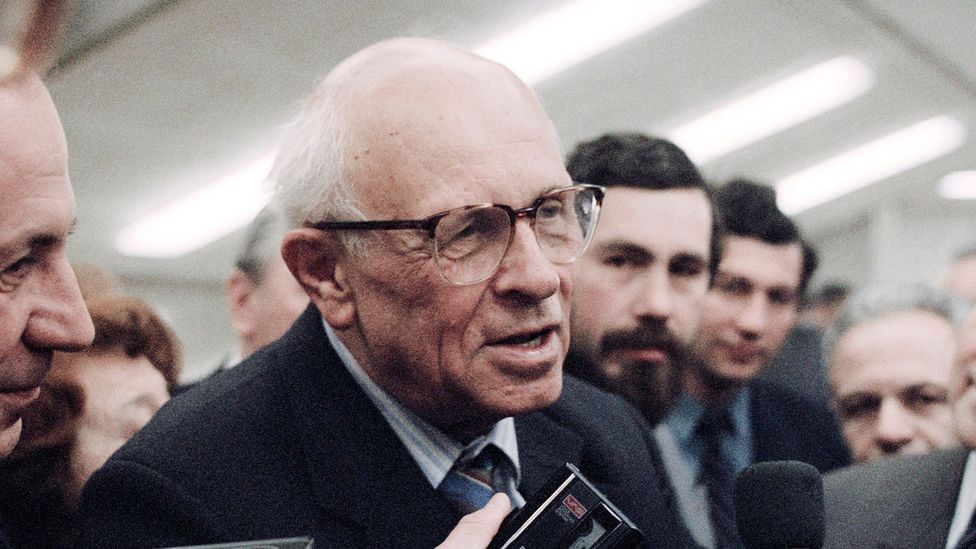The world was brought to its knees during the end of World War II in 1945, when the United States (US) detonated two nuclear bombs over Japanese cities of Hiroshima and Nagasaki, killing between 1,29,000 and 2,26,000 people, mostly civilians.
Germany Unveils New Armoured Vehicle Which Is Fast, Furious, Hybrid & Silent
The deadly nuclear attacks which were caused by the two atomic bombs called the “Little Boy” and “Fat Man” that had lethal after-effects which lingered months after the actual attack, killing more from burns, radiation sickness and other injuries and illness.
While the incident marked its place in the history books as one of the worst disasters of war caused by the powerful nuclear bomb, an even monstrous atomic bomb was being tested by the USSR a decade and a half post the attack in Japan.

The “Tsar Bomba” or the Soviet RDS-220 hydrogen bomb developed in the USSR is considered till date the most powerful nuclear weapon ever created and tested.
The massive bomb, while very similar in shape to the ‘Little Boy’ and ‘Fat Man’, was 8 metres long (26 feet), had a diameter of nearly 2.6 metres (7 feet) and weighed more than 27 tonnes.
Codenamed Ivan or Vanya, the bomb was so big that it was forced to be carried by the huge, swept-wing, four-engined Soviet Tu-95 bomber, with the device deemed too large to fit inside the aircraft’s internal bomb-bay, where such munitions would usually be carried.

After seeing the US take lead in the development and testing of atomic weapons to become the world’s only nuclear superpower, the Soviet Union was desperate to catch up and stamp their mark on the world, with the country going on to take enormous strides in nuclear research.
According to Philip Coyle, the former head of US nuclear weapons testing under President Bill Clinton, who helped design and test atomic weapons for 30 years – “The US had been very far ahead because of the work it had done to prepare the bombs for Hiroshima and Nagasaki. And then it did a large number of tests in the atmosphere before the Russians even did one,”
“We were ahead and the Soviets were trying to do something to tell the world that they were to be reckoned with. Tsar Bomba was primarily designed to cause the world to sit up and take notice of the Soviet Union as an equal.”
On the morning of October 30, 1961, the Tsar Bomba which was referred to as the “City Destroyer” was dropped by the Tu-95 bomber with the help of a giant parachute, which slowly drifted down to the height of 13,000 feet and detonated over Novaya Zemlya, a sparsely populated archipelago.
The detonation created a massive fireball five miles wide, which could be seen from 1,000 kilometres (630 miles) away, with the bomb’s mushroom cloud soaring to 64 kilometres high.
The effects were catastrophic as a village in the 55-kilometre radius of the detonation had all its houses completely demolished, with districts in the hundred-mile radius also reporting collapses of houses, roofs and other damages.

According to a cameraman on board the aircraft – “The clouds beneath the aircraft and in the distance were lit up by the powerful flash. The sea of light spread under the hatch and even clouds began to glow and became transparent. At that moment, our aircraft emerged from between two cloud layers and down below in the gap a huge bright orange ball was emerging,”
The ball was powerful and arrogant like Jupiter. Slowly and silently it crept upwards… Having broken through the thick layer of clouds it kept growing. It seemed to suck the whole Earth into it. The spectacle was fantastic, unreal, supernatural.”
The nuclear bomb unleashed an enormous amount of energy, believed to be in the order of 57 megatons, or 57 million tons of TNT, 1,500 times that of the Hiroshima and Nagasaki bombs combined, and 10 times more powerful than all the munitions expended during World War Two.
The sensors which registered the bomb’s blast wave saw the wave orbiting the Earth three times. The detonation was followed by global condemnation by the likes of the UK, US, Sweden and others.
The aftermath was so immense that even the bomb’s chief architect Andrei Sakharov began efforts to rid the world of the very weapons he had helped create.

According to Frank von Hippel, a physicist and head of Public and International Affairs at Princeton University – “He (Sakharov) was really apprehensive about the amount of radioactivity it would create and the genetic effects that could have on future generations. It was the beginning of his journey from being a bomb designer to becoming a dissident.”
The bomb was considered too big and powerful for its own good and since it couldn’t even be placed on a missile or a plane due to its weight, if it were to be used, the operation would only be deemed as a one-way mission.
“It’s hard to find a use for it unless you want to knock down very large cities. It simply would be too big to use,” said Coyle.
According to Sakharov, the bomb could cause global fallout and spread toxic dirt across the planet, therefore, while the USSR was successful in detonating the most powerful, deadly nuclear bomb known to mankind, the option just wasn’t suitable for anyone, not even for the Soviet Union.




